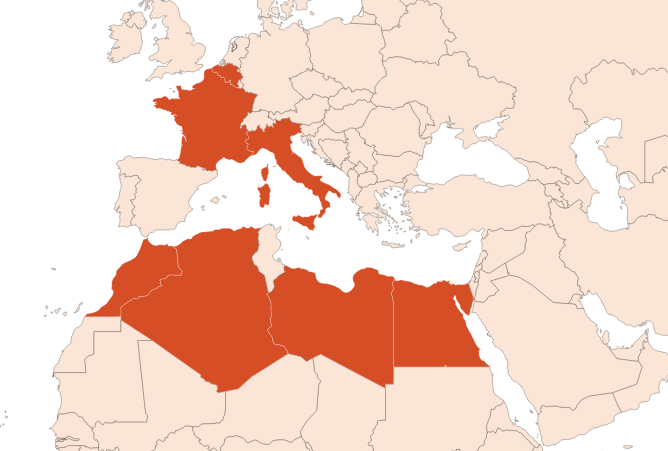
| Company | Ingredient Name | ID | Comments | Naturality | Certifications | Purity | Latin name | Treated part | Geographical origin | MOQ |
|---|---|---|---|---|---|---|---|---|---|---|
|
|
Huile essentielle de Camomille Romaine - 30 gr | - |
Visit website
|
- | - | - | - | - | - | |
|
|
CAMOMILLE ROMAINE | F0412 |
Visit website
|
Huile essentielle | - | Anthemis nobilis L. | Sommité fleurie | France | - | |
|
|
CAMOMILLE ROMAINE | N0412 |
Visit website
|
Huile essentielle |


|
- | Anthemis nobilis L. | Sommité fleurie | Maroc | - |
|
|
CAMOMILLE ROMAINE | B197 |
Visit website
|
Huile essentielle |

|
- | Anthemis nobilis L. | Sommité fleurie | Maroc | - |
|
|
CAMOMILLE ROMAINE | B195 |
Visit website
|
Huile essentielle |

|
- | Anthemis nobilis L. | Sommité fleurie | France | - |
|
|
CAMOMILLE ROMAINE | 195 |
Visit website
|
Huile essentielle | - | Anthemis nobilis L. | Sommité fleurie | France | - |
General Presentation
-
CAS N° : 8015-92-7
-
EINECS number : 283-467-5
-
FEMA number : 2275
-
Appearance : Yellow liquid
-
Density : 0,900 - 0,920 @20°C
-
Volatility : Head/Heart
-
Price Range : €€€€
Physico-chemical properties
-
Optical rotation : Donnée indisponible
-
Vapor pressure : Donnée indisponible
-
Refractive Index @20°C : Donnée indisponible
-
Acid Value :
-
Flash Point :
Uses
Uses in perfumery :
Used in luxury perfumery for reconstructions of floral-rose, tuberose, masculine, eaux fraîches and tea notes.
Major Components :
- 3-Methyl Pentyl Angelate (20-25%)
- Isoamyl Angelate (15-20%)
- 2-Methyl-2-Propenyl Angelate (10-15%)
- 3-Methyl Pentyl Isobutyrate (10-15%)
- trans-Pinocarveol (≈4%)

Photo credits: ScenTree SAS
Botanical name :
Chamaemelum nobile (L.) All.
Synonyms : Anthemis nobilis L. // Anthemis chamomilla-romana Crantz
Botanical profile :
Roman chamomile is a plant of the Asteraceae family and the genus Anthemis.
Chemotypes :
Roman chamomile is a so-called ''esters '' chamomile, for its composition. There are several varieties of chamomile, some of which are used in perfumery:
Matricaria chamomilla, or blue chamomile, whose essential oil of blue colour is also widely used in perfumery.
Anthemis arvensis is an scentless variety of chamomile.
Anthemis cotula, or stinky chamomile, is renowned for its very powerful and unpleasant smell.
Anthemis tinctoria, or yellow chamomile, is a yellow variety, grown in Europe and West Asia.
Ormenis multicaulis, or Moroccan wild chamomile, grown for its essential oil in the Mediterranean basin. It has a fruity and green note.
Matricaria discoidea, or pineapple weed, native to North America and subsequently introduced in France.
Extraction process :
The harvest of chamomile is made with a harvester.
Chamomiles are distilled in two ways: traditionally or in a truck box. Traditional distillation involves harvesting the chamomile with its stems without grinding it. The fresh plant is left outside to dry in the sun, before it is extracted classically, by steaming in distillation tanks. Truck box distillation consists in harvesting chamomile and its stem with a harvester by grinding it. The chamomile is extracted inside the harvest box, with a water vapor entry and an exit towards a coolant, where the essential oil is collected.
Traditional distillation gives a warmer and herbaceous scent, as both green and volatile molecules have evaporated during the drying step.
In 2018, world cultivation of Roman chamomile spread over 1000 hectares of land, for a total production of about 16 tons of essential oil.
Other comments :
Chamomile is called Roman, because it was named for the first time by Joachim Camerarius, a German botanist, as it was abundant near Rome in 1588.
Chrysin, a typical flavonoid of Roman chamomile, gives it all of its relaxing and anxiolytic virtues.
Stability :
The esters identified in this raw material can form their corresponding acid in stability tests
The terpenes identified in this raw material can polymerize when they are oxidized
Regulations & IFRA
Allergens :
IFRA 51th :
This ingredient is not restricted for the 51th amendment


